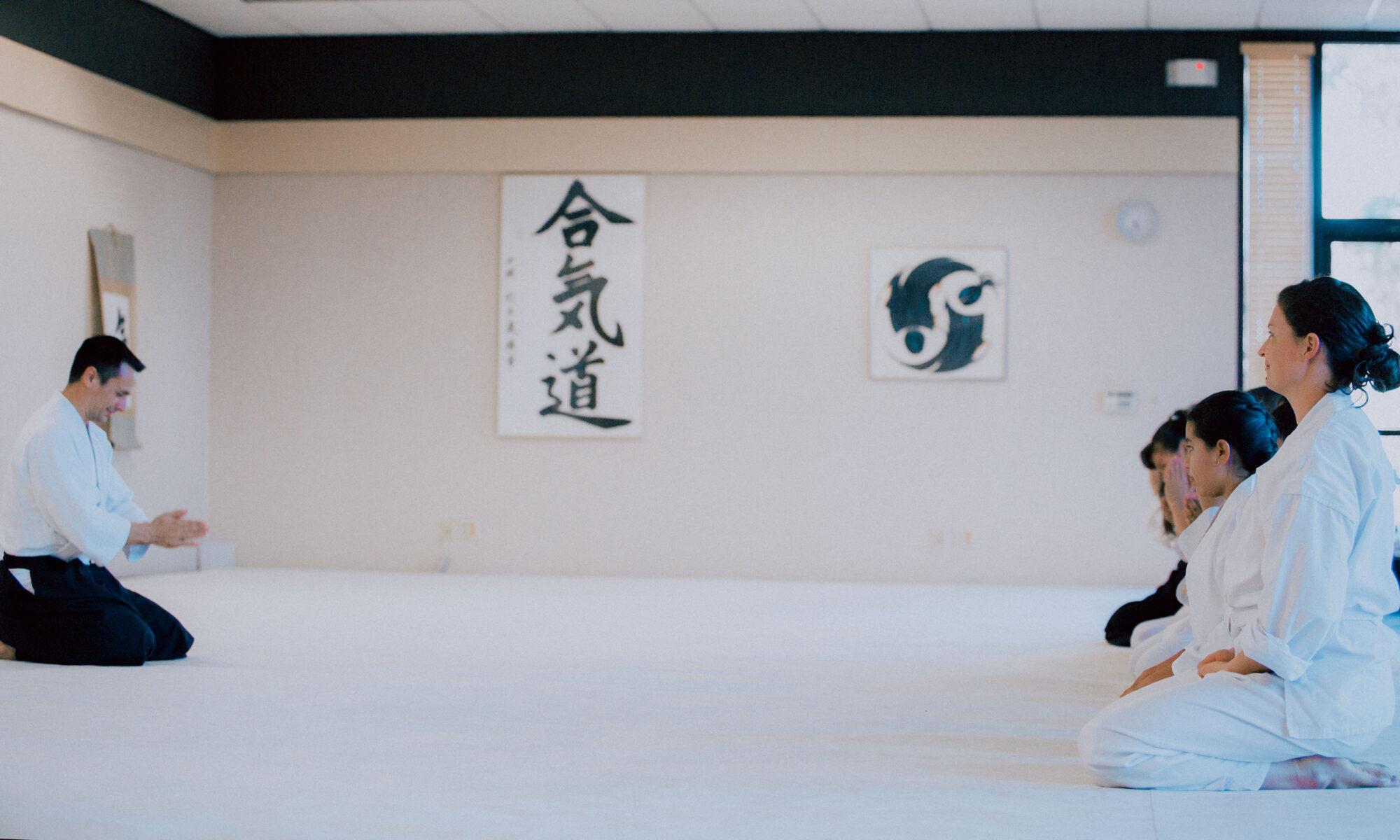Learning about Aikido and FAQs
- What is Aikido?
- Does it work on the street?
- Is it useful for anything other than self-defense?
- Who studies Aikido
- What does Aikido look like?
Our lives are flooded with images of violence and conflict. Sometimes we think the only way out is to become faster, tougher, and meaner than our perceived opponents, but that’s not the answer we want for our children or ourselves. Violence perpetuates violence. Anger is a cop out. It acknowledges our feelings of fear and helplessness, but it solves no problem.
Reconciling the world in the face of this fear and this anger – even reconciling our neighborhoods or families – takes real courage, and that’s the heart of Aikido.
Safety without violence. Success without force. Comfort without surrender. You can have it all: Power, Grace, Confidence, Kindness, Strength, Compassion, Success.
You’ll work and enjoy learning in these areas
- Mind Set: No enemies, no resistance; you’ll be successful in all endeavors.
- Physical Technique: natural movement, natural safety; you’ll be effective at self defense and with ease.
- Vitality: breath and posture; you’ll learn the secrets of good health, extra energy and stamina.
You’ll find Aikido exciting and easy to learn. No special strength or skill is required. Aikido is self defense for those of us who prefer happiness in life and win/win solutions to differences.
By focusing on your body’s natural response, you won’t need sophisticated movements or extra power. You will surprise yourself. Gravity trumps power. Rhythm trumps speed. Try it and see.
What is Aikido?
Aikido is a 20th century martial art developed by Morihei Ueshiba -Known as “O Sensei” -as a synthesis of his martial studies, philosophy, and beliefs. He created art that practitioners could use to defend themselves while also protecting their attacker from injury. Aikido is not just a martial art, but serves as physical and mental training in the art of universal peace and reconciliation.
Back to top
Does it work on the Street?
Aikido is not a fighting art. Instead, it’s about defusing violence before it happens. Police and firefighters have trained with us. Children, teens adults, and seniors have trained with us. Over the years, our students have told us stories of foiling muggers, defusing fights, standing up to bullies, and avoiding domestic violence.
Back to top
Is it useful for anything other than self-defense?
Once students progress past the self-defense portion of the curriculum, they begin to learn the deep and rich art of Aikido. This phase is where we hear people tell us how Aikido changed their lives helping them to be proactive, withstand stress, increase self-confidence, and improve relationships with their family, friends, and co-workers. Aikido students typically become happy energetic people.
Back to top
Who studies Aikido?
Children, teens, adults, people with disabilities, older adults. Everybody! As well as children, youth and adults who simply want to feel safe and secure. We have taught hundreds of all ages, from children to retirees. We even have experience with both victims and aggressors – By teaching assertiveness, while dissuading aggression.
Our children and youth start classes at four years old. Once students reach their teens, they usually transition into our adult classes. Some of our earliest young students are now adults with children of their own.
Our adult students range in age from teenagers to retirees and grandparents. They include stay-at-home moms, teachers, construction workers, police, correctional officers, and many others. Short people, tall people, young or old people, strong or weak people, students with bad backs or weak knees – all are welcome.
Back to top
What does Aikido look like?
Aikido is performed by blending with the motion of the attacker and redirecting the force of the attack, rather than opposing it head-on. This requires very little physical strength and can be used successfully by people of all ages and body conditions. Aikido emphasizes the use of coordinated whole-body movement and balance similar to yoga or pilates.
Back to top

